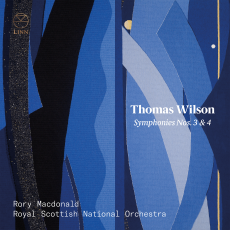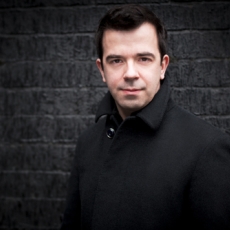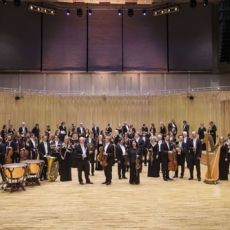Rory Macdonald & RSNO - Thomas Wilson: Symphonies Nos. 3 & 4 - Records International
Wilson was a natural symphonist of the highest quality, with an individual approach to symphonic writing; he said that he thought symphonically in all his writing. Both these half-hour symphonies are in a single span, divided into clearly delineated sections, and both have an overtly programmatic narrative. Having started with the influences of early and mid-century modernism and the contemporary idioms that grew out of them, in his mature style he settled on an advanced tonal idiom, not worlds away from Robert Simpson's sense of harmony, with the freedom to draw on freer, more expressionist techniques as required by the dramatic narrative of the works. The Third Symphony follows a kind of birth-to-death narrative, beginning in amorphous, ominous confusion of pre-birth chaos. The work alternates slow and fast sections; a sort of scherzo in defined harmony, unlike that of the introduction, follows, with driving, unstable youthful energy drawn in jagged lines of highly inventive orchestration (a Wilson trademark; his handling of orchestral forces is original and almost graphically illustrative), with an important piano part. Full maturity is reached in a richly textured slow movement, followed by an affirmative fast movement that leads to a climactic crisis. The final section is slow and increasingly full of resigned serenity, with several distinctive motifs from earlier in the work finally becoming the whole of the work's closing argument. The Fourth Symphony, from a decade later, is in some ways an even more impressive work. 'Passeleth' is the ancient Brythonic name, dating back at least to the twelfth century, of the Scots town of Paisley, a region steeped in history and home to a famous and imposing abbey (where the symphony, commissioned for the city's 500th anniversary, received its premiere). The symphony begins with a clamorous carillon of orchestral bell sounds, and then progresses through a series of linked, contrasting episodes that evoke the tranquillity of the abbey, warlike fanfares, the turmoil of the Reformation (the music contains references to a Protestant psalm and the plainchant Victimae paschali laudes), the Industrial Revolution, and a final optimistic vision of the future. Although programmatically episodic, the work has the overall unhurried symphonic sweep of a true neo-romantic symphony, anchored by returning references to the opening carillon. Carillon, the work, does something similar for the city of Glasgow; it was commissioned in 1990 for the city's year as 'European City of Culture' and the inauguration of its new concert hall. More than simply an occasional piece, the work is a large-scale orchestral scherzo, brilliantly orchestrated, illustrating the city's industry and energy.


